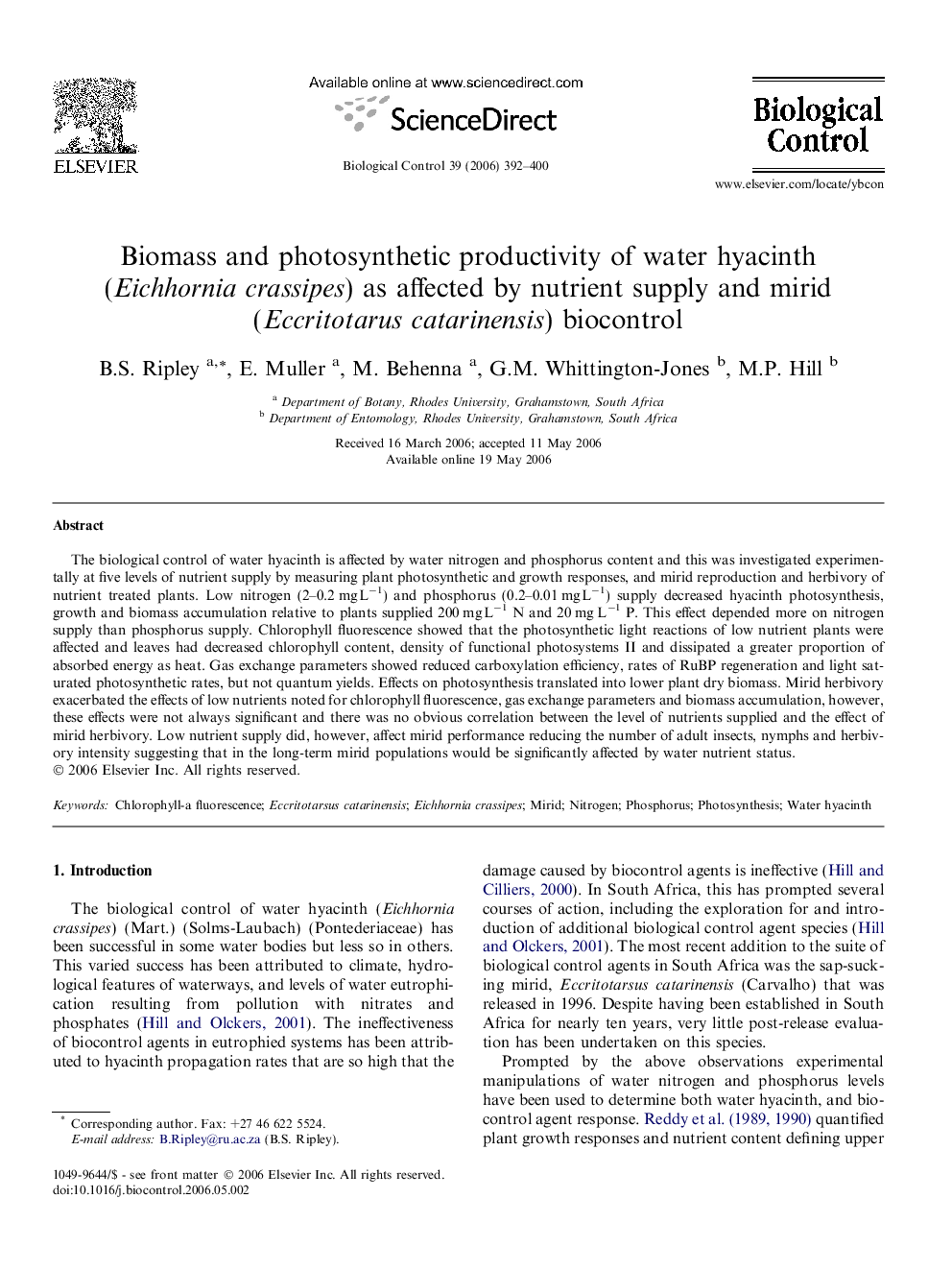| کد مقاله | کد نشریه | سال انتشار | مقاله انگلیسی | نسخه تمام متن |
|---|---|---|---|---|
| 4505387 | 1321142 | 2006 | 9 صفحه PDF | دانلود رایگان |

The biological control of water hyacinth is affected by water nitrogen and phosphorus content and this was investigated experimentally at five levels of nutrient supply by measuring plant photosynthetic and growth responses, and mirid reproduction and herbivory of nutrient treated plants. Low nitrogen (2–0.2 mg L−1) and phosphorus (0.2–0.01 mg L−1) supply decreased hyacinth photosynthesis, growth and biomass accumulation relative to plants supplied 200 mg L−1 N and 20 mg L−1 P. This effect depended more on nitrogen supply than phosphorus supply. Chlorophyll fluorescence showed that the photosynthetic light reactions of low nutrient plants were affected and leaves had decreased chlorophyll content, density of functional photosystems II and dissipated a greater proportion of absorbed energy as heat. Gas exchange parameters showed reduced carboxylation efficiency, rates of RuBP regeneration and light saturated photosynthetic rates, but not quantum yields. Effects on photosynthesis translated into lower plant dry biomass. Mirid herbivory exacerbated the effects of low nutrients noted for chlorophyll fluorescence, gas exchange parameters and biomass accumulation, however, these effects were not always significant and there was no obvious correlation between the level of nutrients supplied and the effect of mirid herbivory. Low nutrient supply did, however, affect mirid performance reducing the number of adult insects, nymphs and herbivory intensity suggesting that in the long-term mirid populations would be significantly affected by water nutrient status.
Journal: Biological Control - Volume 39, Issue 3, December 2006, Pages 392–400